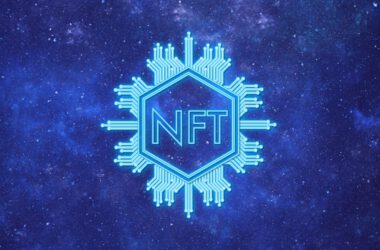Creating a metaverse has gone through many iterations. The idea shifted from forms of augmented reality or VR-powered games into a world where imagery and social media can mix.
The technological realization of a metaverse is just starting to happen, and large players like Meta (formerly Facebook) are playing with the idea. But also, a new crop of startups coming in from the world of cryptocurrency are now seeking an extension of their digital communities.
While most digital communication and content is still happening in the context of Web 2.0, we have gathered 10 possible use cases for metaverse technologies and digital venues.
Fantasy Sports and Championships
A metaverse experience can enrich fantasy football and championships. The potential for point of view differences and experiences can build on existing realistic fantasy sports engines. It would take the talent of game studios to build up this type of metaverse experience.
But when it comes to the side of blockchain activity, existing projects have shown a significant demand for sports content and sports-themed NFTs and collections. With the trend of gamified sport NFTs, a full metaverse experience may give more meaning to owning those digital player versions.
Restricted Digital Spaces
The metaverse can, by its definition, become restrictive. While Web 2.0 has been a tool for wide access and distribution, the metaverse will be a venue of digital scarcity and exclusivity.
The idea of digital borders and terrains has already helped boost the value in games like The Sandbox and the venues of Decentraland.
Scarcity and Ownership
The NFT standard, whether ERC-271 tokens or those based on Binance Smart Chain, has shown that an easily achievable scarcity is possible. This approach has its critics, who fought for free information and unlocked access to all content on Web 2.0.
But the new metaverse technology may offer significant constraints to points of view or content consumption. This would translate into the potential for establishing strong digital ownership and limitations.
Game Streaming at New Level
Game streaming boomed as one of the chief sources of content for Web 2.0, especially video streaming. For the past year, streamers reached an estimated 1.2B viewers. With metaverse experiences, streaming content may take a whole new meaning, especially with the potential for additional points of view. The presence of NFT-protected items or regions can make streaming even more high-stakes.
Metaverse Social Media
It is no wonder Facebook decided to move from the model of social media to potentially launching a metaverse. The mode of communication in a metaverse will enforce a different set of rules, changing the dimensions of social media, interconnection, and content distribution.
Sandbox World for Sale
The metaverse can also be a creative venue. There are already examples of paid world-building, where Minecraft is the ground laid out for immense, creative structures. With multiple game-based metaverse fragments, item, building, and terrain creation will rise from a hobby and into a profession. The metaverse, partially or fully an open world, will become a building ground for original digital structures.
Decentralization and Web 3.0
Content in Web 2.0 can be aggregated and amplified, sometimes building inadvertent echo chambers and media bubbles. The Metaverse has been tied to the idea of Web 3.0, where content, communities and interactions are decentralized, with a specific niche, and can develop without the need of algorithmic amplification.
The cryptocurrency space has been the biggest proponent of decentralization. This use case is still to be implemented by technology. But game venues have the potential of creating content and interactions that will not obey the current rules of curated content. For now, it is up to crypto-related startups to generate appealing games and build that possible metaverse use case.
E-Commerce Evolved
The metaverse can become a spot for trading both digital and physical items. The idea that a real item can be protected and have ownership proven through a digital token has been tested with blockchain already. Physical items have been tagged and traced with blockchain records. The originality of items can also be checked on the blockchain.
Bringing together proof of origin and a blockchain record can build a new type of e-commerce, where metaverse and physical features mix.
Educational Applications
A media-rich environment like the metaverse can also become an educational hub. The metaverse may be an extension of learning hubs, bringing a limited experience to learning. With distance learning already a more well-accepted practice, the metaverse can become one of the tools to widen the outreach.
But metaverse reality can also be used in educational institutions, ensuring more engaging media experiences.
Augmented Reality
Augmented reality and crypto-collectibles have been tried as a crossover, with some success in spreading collections that also interact with the environment. NFT collections augmenting reality are already uniting communities with crypto-based ownership, such as the VeVe project.
Whether all those implementations will take off is still a conjecture. It is also a question of whether the new developments will be grabbed by the leaders on Web 2.0, or will become a toolset for independent builders and a new crop of startups. The metaverse may turn into the next environment where digital assets, fungible and non-fungible, will exist and expand a fully digital economy.










